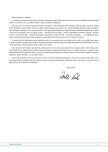BLADDER PAIN SYNDROME - CURRENT TERMINOLOGY, DIAGNOSTICS AND TREATMENT
Authors:
M. Fedorko
Authors‘ workplace:
Nemocnice Kyjov, p. o.
; Urologické oddělení
Published in:
Urol List 2010; 8(3): 70-75
Overview
Bladder pain syndrome, historically referred to as painful bladder syndrome or interstitial cystitis, is a chronic and distressing condition that can be integrated into a large group of chronic pelvic pain syndromes. The aim of the article is to present an overview of this disease, with emphasis given to current terminology and knowledge about diagnostics and treatment.
Key words:
bladder pain syndrome, chronic pelvic pain, interstitial cystitis
Sources
1. Fall M, Baranowski AP, Elneil S et al. EAU Guidelines on Chronic Pelvic Pain. Eur Urol 2010; 57(1): 35–48.
2. Wein AJ, Kavoussi LR, Novick AC et al. Campbell-Walsh Urology. 9th ed. Philadelphia: W.B. Saunders 2007.
3. Abrams P, Cardozo L, Fall M et al. The standardisation of terminology of lower urinary tract function: report from the Standardisation Subcommitte of the International Continence Society. Urology 2003; 61(1): 37–49.
4. Merskey H, Bogduk N. Classification of Chronic Pain. Descriptions of Chronic Pain Syndromes and Definitions of Pain Terms. IASP Press, 2002.
5. van de Merwe JP, Nordling J, Bouchelouche P et al. Diagnostic criteria, classification, and nomenclature for painful bladder syndrome/interstitial cystitis: an ESSIC poposal. Eur Urol 2008; 53(1): 60–67.
6. Gillenwater JY, Wein AJ. Summary of the National Institute of Arthritis, Diabetes, Digestive and Kidney Diseases Workshop on Interstitial Cystitis, National Institutes of Health, Bethesda, Maryland, August 28–29, 1987. J Urol 1988; 140(1): 203–206.
7. Koziol JA. Epidemiology of interstitial cystitis. Urol Clin North Am 1994; 21(1): 7–20.
8. Koziol JA, Adams HP, Frutos A. Discrimination between the ulcerous and the nonulcerous forms of interstitial cystitis by noninvasive findings. J Urol 1996; 155(1): 87–90.
9. Buffington CA. Comorbidity of interstitial cystitis with other unexplained clinical conditions. J Urol 2004; 172(4): 1242–1248.
10. Rosenberg M, Parsons LC, Page S. Interstitial cystitis: a primary care perspective. Cleve Clin J Med 2005; 71(8): 698–704.
11. Johansson SL, Fall M. Pathology of interstitial cystitis. Urol Clin North Am 1994; 21: 55–62.
12. Keay SK, Zhang CO, Shoenfelt J et al. Sensitivity and specificity of antiproliferative factor, heparin-binding epidermal growth factor-like growth factor, and epidermal growth factor as urine markers for interstitial cystitis. Urology 2001; 57: 9–14.
13. Held PJ, Hanno PM, Wein AJ. Intersticial cystitis. London: Springer-Verlag 1990.
14. Osborne JH, Manhattan D, Laumnn B. The Interstitial Cystitis Network Patient Handbook. Santa Rosa: The Interstitial Cystitis Network 1999.
15. Chaiken DC, Blaivas JG, Blaivas ST. Behavioral therapy for the treatment of refractory interstitial cystitis. J Urol 1993; 149: 1445–1448.
16. Oyama IA, Rejba A, Lukban JC et al. Modified Thiele massage as therapeutic intervention for female patients with interstitial cystitis and high-tone pelvic floor dysfunction. Urology 2004; 64(5): 862–865.
17. Daha LK, Riedl CR, Lazar D et al. Do cystometric findings predict the results of intravesical hyaluronic acid in women with interstitial cystitis? Eur Urol 2005; 47(3): 393–397.
18. Kuo HC. Urodynamic results of intravesical heparin therapy for women with frequency-urgency syndrome and interstitial cystitis. J Formos Med Assoc 2001; 100: 309–314.
19. Riedl CR, Knoll M, Plas E et al. Electromotive drug administration and hydrodistention for the treatment of interstitial cystitis. J Endourol 1998; 12(3): 269–272.
20. Langford CF, Udvari Nagy S, Ghoniem GM. Levator ani trigger point injections: An underutilized treatment for chronic pelvic pain. Neurourol Urodyn 2007; 26(1): 59–62.
21. Peeker R, Aldenborg F, Fall M. Complete transurethral resection of ulcers in classic interstitial cystitis. Int Urogynecol J Pelvic Floor Dysfunct 2000; 11(5): 290–295.
22. Blaivas JG, Weiss JP, Desai P et al. Long-term followup of augmentation enterocystoplasty and continent diversion in patients with benign disease. J Urol 2005; 173(5): 1631–1634.
Labels
Paediatric urologist UrologyArticle was published in
Urological Journal

2010 Issue 3
Most read in this issue
- CHRONIC PELVIC PAIN SYNDROME AND CURRENT TREATMENT OPTIONS
- CHANGING MANAGEMENT OF CHRONIC PROSTATITIS/CHRONIC PELVIC PAIN SYNDROME
- OVERACTIVE BLADDER IN CHILDREN AND ADULT PATIENTS
- CHRONIC PELVIC PAIN (CPPS): ANATOMICAL CONSIDERATIONS, PATHOPHYSIOLOGICAL MECHANISMS, CONFUSABLE DISEASES, THE PHENOMENON OF CHRONICITY. BLADDER PAIN SYNDROME
